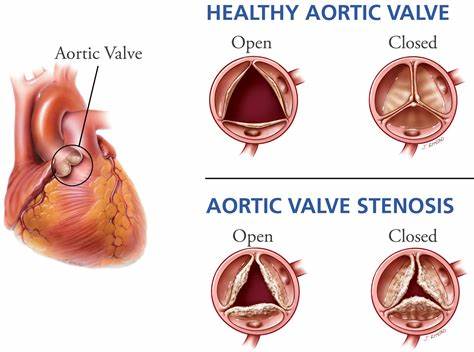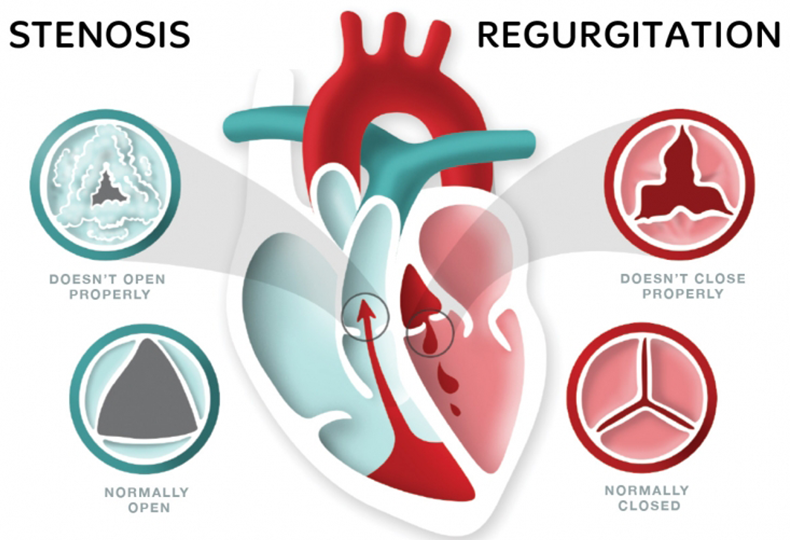The heart valves are the "gates" of the heart's blood circulation. Once the valves become narrow or fail to close properly, the heart can experience insufficient pumping or failure, leading to symptoms such as chest tightness, shortness of breath, swelling, weakness, chest pain, and more, greatly reducing the patient's quality of life and posing a significant risk of sudden death. For patients with end-stage aortic valve disease, aortic valve replacement surgery is often the only choice.
However, due to the risks involved, there are many conditions that must be met for valve replacement surgery. Before the surgery, doctors carefully assess various conditions of the patient's aortic valve.
So, under what circumstances does valve replacement surgery become beneficial for patients as the disease progresses?
Since aortic valve disease is divided into two major categories: aortic stenosis and aortic regurgitation, the valve replacement plan also needs to be tailored accordingly.
Patients with aortic valve stenosis should undergo valve replacement surgery in the following situations:
If a patient's aortic valve stenosis (whether congenital or acquired) reaches the level of severe stenosis, valve replacement surgery is generally necessary. Severe aortic stenosis is usually defined as a maximum aortic valve velocity of ≥4.0 m/s or a mean transvalvular pressure gradient of ≥40 mmHg, along with an aortic valve area of ≤1.0 cm². Since aortic valve stenosis typically leads to left ventricular hypertrophy, the left ventricular ejection fraction (LVEF) is often used as an indicator to assess whether aortic valve patients need surgery.
The indications for supporting aortic valve replacement in patients with aortic valve stenosis are as follows:
1. Patients with severe aortic valve stenosis who are symptomatic or show symptoms after exercise testing.
2. Asymptomatic patients with severe aortic valve stenosis and an LVEF of <50%.
3. Patients with severe aortic valve stenosis who require other cardiac surgeries.
4. Asymptomatic patients with extremely severe aortic valve stenosis (maximum aortic valve velocity ≥4.5 m/s) and low surgical risk.
5. Asymptomatic patients with severe aortic valve stenosis who have reduced exercise tolerance or decreased systemic blood pressure during exercise.
6. Asymptomatic patients with rapidly progressing severe aortic valve stenosis (under low-risk surgical conditions).

Patients with aortic valve regurgitation (AR) should undergo valve replacement surgery in the following situations:
In clinical practice,Aortic regurgitation (AR) often causes the left ventricle to perform extra work to pump enough blood, which can eventually lead to left ventricular hypertrophy. Therefore, determining whether patients with aortic valve regurgitation need valve replacement surgery not only involves assessing the degree of aortic valve regurgitation but also considering relevant indicators of left ventricular systolic function.
Patients with aortic valve regurgitation (AR) should undergo valve replacement surgery in the following situations:
1. Symptomatic patients with severe aortic valve regurgitation (without considering left ventricular function).
2. Asymptomatic patients with severe aortic valve regurgitation who develop symptoms after exercise testing.
3. Asymptomatic patients with severe aortic valve regurgitation and a left ventricular ejection fraction (LVEF) of <50% (indicating impaired systolic function).
4. Asymptomatic patients with severe aortic valve regurgitation who, despite normal left ventricular ejection function, have a left ventricular end-systolic diameter of >50 mm.
5. Patients with severe aortic valve regurgitation who, despite normal left ventricular ejection function, have a left ventricular end-diastolic diameter of >65 mm (indicating severe left ventricular enlargement, surgery may be considered under low surgical risk).
6. Patients with severe or moderate aortic valve regurgitation who require other cardiac surgeries (as evaluated by physicians).













 沪公网安备 31011502014876号
沪公网安备 31011502014876号 are registered trademarks of MicroPort CardioFlow Medtech Corporation.
are registered trademarks of MicroPort CardioFlow Medtech Corporation.